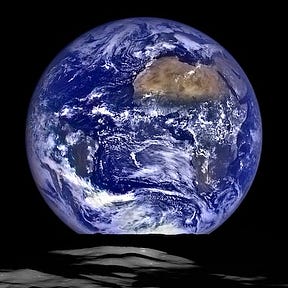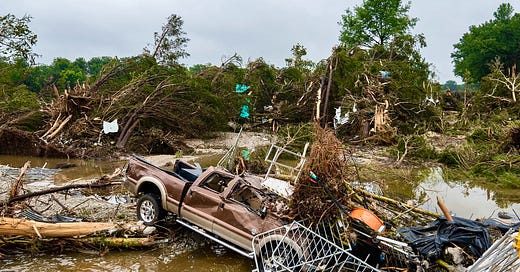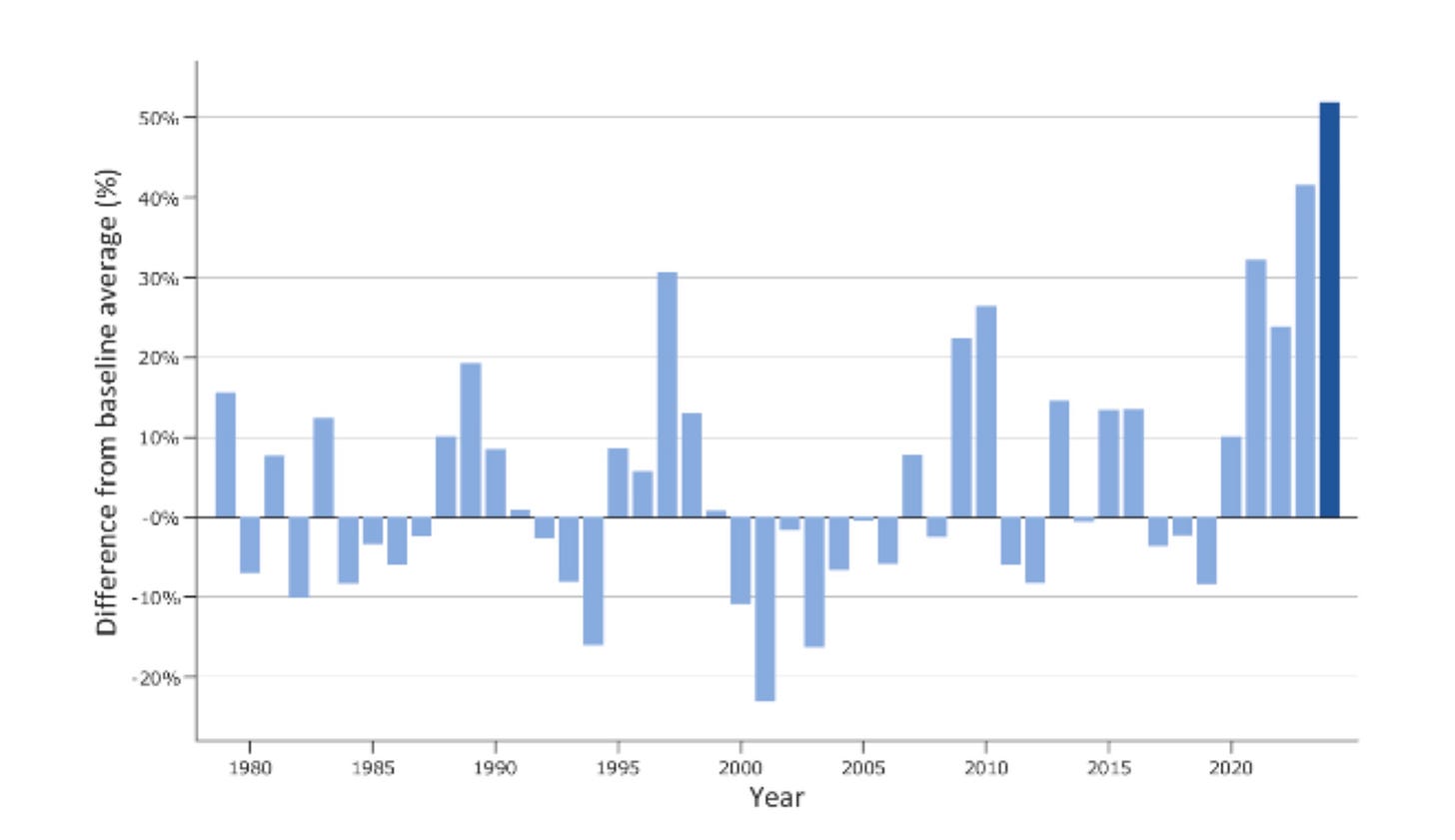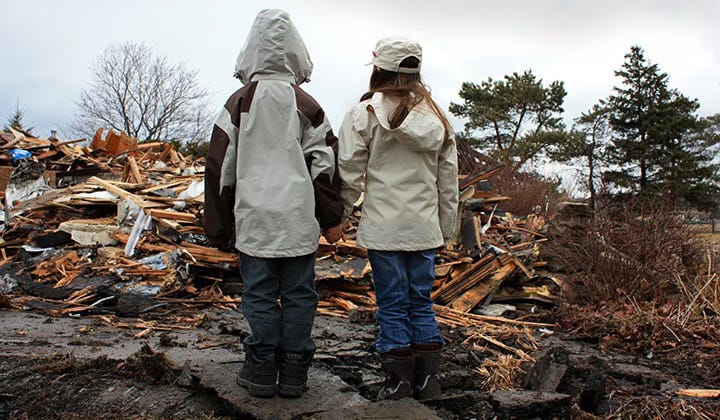Flash Flooding Increasing Around the World
Unnatural weather extremes will only intensify in the coming years
Flash flooding is increasing worldwide, including areas that are typically safe from flooding.
Extreme rainfall is a primary cause of flooding worldwide, affecting regions beyond the traditional high-risk areas along waterways.
—2025 State of Flood Report by Marsh McLennan
The reason for a big increase in flash flood events is that more rain is falling over shorter time spans.
A series of severe storms hit the central and southeastern U.S. this past April, and brought more than three April’s worth of rain over a few hours. This was said to be a 1-in-a-1,000-year event.
With a hotter climate, that metric is no longer relevant.
Need-to-Know: Exceptional 1-in-1,000 years and 1-in-500 years rainfall events have become a regular occurrence.
For example, extreme rainfall events with up to 14 inches of rain falling in 24 hours have increased by 60% in the US Northeast.
When rain falls faster than the ground or drainage systems can handle it, tiny streams become unstoppable torrents of water. River levels around the world regularly top high-water marks that have stood for a hundred years or more.
Homes and businesses far from rivers or streams can experience overland flooding. Overland flooding has become more frequent and widespread in recent decades.
Floods claimed the lives of 5,250 people and displaced 43 million people in 2024, according to the Emergency Events Database. Damages and economic losses topped $500 billion.
Recall last year’s devastating flash floods in Valencia, Spain?
Over 770 millimeters (30 inches) of rain in just a few hours. It was Spain’s worst weather disaster, claiming 232 lives and totaling €18 billion in damages, with 11,242 homes destroyed and 120,000 vehicles written off.
Need-to-Know: Why normal rainfall has turned into deluges.
The well-documented increase in extreme rainfall events globally is primarily the result of hotter temperatures.
Rising temperatures have significantly increased evaporation rates. The atmosphere acts like a sponge, soaking up water from the enhanced evaporation. This atmospheric sponge can hold more water in warmer temperatures—7% more water per 1.0 degree C of warming.
Record-high 24-hour rainfall extremes occurred 52% more often in 2024 than during 1995–2005, according to the 2024 Global Water Monitor Report.
Since temperatures are currently 2.0 degrees C higher over the continental U.S., the air can now hold 14% more moisture. In Western Europe, temperatures are 2.8 degrees C higher this summer, so there is potential for Valencia-like flooding again this year.
It also turns out that hotter ground temperatures lead to stronger updrafts of water-laden air masses. These then cool down faster, resulting in heavier rainfall, according to a new study in the journal Nature. This has led to a 15% increase in torrential rainfall events lasting only a few hours, as well as an increase in flash flooding.
“The temperature increase caused by climate change leads to more intense precipitation locally”, the study concluded.
If climate change were a shark, water, either too much or too little, is its teeth.
Until next time.
Stephen



















